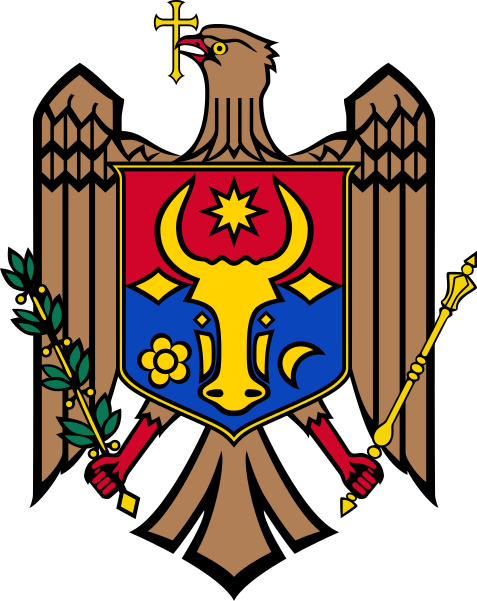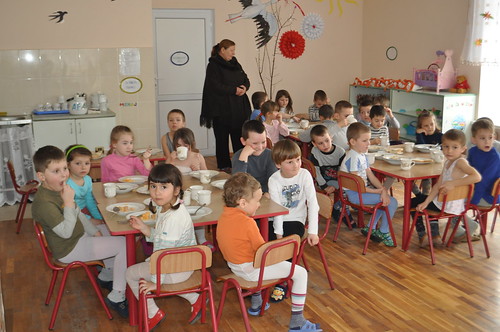Difference between revisions of "Adopting from Moldova"
| Line 7: | Line 7: | ||
{{#eimage:http://upload.wikimedia.org/wikipedia/commons/thumb/a/a3/Coat_of_arms_of_Moldova.svg/477px-Coat_of_arms_of_Moldova.svg.png|410x579px|thumb|'''The official coat of arms.'''<BR/>Source: Wikipedia.org.}} | {{#eimage:http://upload.wikimedia.org/wikipedia/commons/thumb/a/a3/Coat_of_arms_of_Moldova.svg/477px-Coat_of_arms_of_Moldova.svg.png|410x579px|thumb|'''The official coat of arms.'''<BR/>Source: Wikipedia.org.}} | ||
| − | {{#eimage:https://farm8.staticflickr.com/7220/7241648096_6af5d420d6.jpg|410x579px|thumb|'''A kindergarden | + | {{#eimage:https://farm8.staticflickr.com/7220/7241648096_6af5d420d6.jpg|410x579px|thumb|'''A kindergarden class.'''<BR/>Source: flickr.com.}} |
{{#eimage:http://upload.wikimedia.org/wikipedia/commons/thumb/8/8d/Tiraspolskaya-Dubosarskaya-Church-2005.jpg/390px-Tiraspolskaya-Dubosarskaya-Church-2005.jpg|410x579px|thumb|'''The Orthodox church in Shevchenko Street in central Tiraspol.'''<BR/>Source: Wikipedia.org.}} | {{#eimage:http://upload.wikimedia.org/wikipedia/commons/thumb/8/8d/Tiraspolskaya-Dubosarskaya-Church-2005.jpg/390px-Tiraspolskaya-Dubosarskaya-Church-2005.jpg|410x579px|thumb|'''The Orthodox church in Shevchenko Street in central Tiraspol.'''<BR/>Source: Wikipedia.org.}} | ||
{{#eimage:http://upload.wikimedia.org/wikipedia/commons/thumb/c/c9/Botanica_Chisinau.jpg/800px-Botanica_Chisinau.jpg|410x579px|thumb|'''View of downtown Chisinau.'''<BR/>Source: Wikipedia.org.}} | {{#eimage:http://upload.wikimedia.org/wikipedia/commons/thumb/c/c9/Botanica_Chisinau.jpg/800px-Botanica_Chisinau.jpg|410x579px|thumb|'''View of downtown Chisinau.'''<BR/>Source: Wikipedia.org.}} | ||
| − | |||
| − | |||
| Line 22: | Line 20: | ||
Part of [[Romania]] during the interwar period, [[Moldova]] was incorporated into the Soviet Union at the close of World War II. Although the country has been independent from the USSR since 1991, Russian forces have remained on Moldovan territory east of the Nistru River supporting the separatist region of Transnistria, composed of a Slavic majority population (mostly Ukrainians and Russians), but with a sizeable ethnic Moldovan minority. To learn more, please read [[About Moldova]]. | Part of [[Romania]] during the interwar period, [[Moldova]] was incorporated into the Soviet Union at the close of World War II. Although the country has been independent from the USSR since 1991, Russian forces have remained on Moldovan territory east of the Nistru River supporting the separatist region of Transnistria, composed of a Slavic majority population (mostly Ukrainians and Russians), but with a sizeable ethnic Moldovan minority. To learn more, please read [[About Moldova]]. | ||
| + | |||
=Hague Convention Information= | =Hague Convention Information= | ||
| Line 28: | Line 27: | ||
Note: Special transition provisions apply to adoptions initiated before April 1, 2008. [http://adoption.state.gov/hague_convention/transition.php Learn more]. | Note: Special transition provisions apply to adoptions initiated before April 1, 2008. [http://adoption.state.gov/hague_convention/transition.php Learn more]. | ||
| + | |||
=Who Can Adopt= | =Who Can Adopt= | ||
| Line 91: | Line 91: | ||
| − | + | =Contact Information= | |
Revision as of 17:48, 5 March 2015
Notice: As of July 14, 2014, all individuals and agencies facilitating international adoptions must be in compliance with the Intercountry Universal Accreditation Act.
Contents
About Moldova
Part of Romania during the interwar period, Moldova was incorporated into the Soviet Union at the close of World War II. Although the country has been independent from the USSR since 1991, Russian forces have remained on Moldovan territory east of the Nistru River supporting the separatist region of Transnistria, composed of a Slavic majority population (mostly Ukrainians and Russians), but with a sizeable ethnic Moldovan minority. To learn more, please read About Moldova.
Hague Convention Information
Moldova is party to the Hague Convention on Protection of Children and Co-operation in Respect of Intercountry Adoption (Hague Adoption Convention). Therefore all adoptions between Moldova and the United States must meet the requirements of the Convention and U.S. law implementing the Convention.
Note: Special transition provisions apply to adoptions initiated before April 1, 2008. Learn more.
Who Can Adopt
Adoption between the United States and Moldova is governed by the Hague Adoption Convention. Therefore to adopt from Moldova, you must first be found eligible to adopt by the U.S. Government. To learn more please read about Who Can Adopt from Moldova.
Who Can Be Adopted
Because Moldova is a member of the Hague Adoption Convention, children from Moldova must meet the requirements of the Convention in order to be eligible for adoption. For example, the Convention requires that Moldova attempt to place a child with a family in Moldova before determining that a child is eligible for intercountry adoption. To learn more please read about Who Can Be Adopted from Moldova.
How to Adopt
Adoption Authority
Moldovan Adoption Authority
The Ministry of Social Protection, Family and Child Adoption Department
The Process
Because Moldova is party to the Hague Adoption Convention, adopting from Moldova must follow a specific process designed to meet the Conventions requirements. A brief summary of the Convention adoption process is given below. You must complete these steps in the following order so that your adoption meets all necessary legal requirements.
NOTE: If you filed your I-600a with Moldova before April 1, 2008, the Hague Adoption Convention may not apply to your adoption. Your adoption could continue to be processed in accordance with the immigration regulations for non-Convention adoptions. Learn more.
- Choose an Accredited Adoption Service Provider
- Apply to be Found Eligible to Adopt
- Be Matched with a Child
- Apply for the Child to be Found Eligible for Immigration to the United States
- Adopt the Child (or Gain Legal Custody) in Moldova
- Bringing your Child Home
To learn more about this process please read How to Adopt from Moldova.
Traveling Abroad
Applying for Your U.S. Passport
A valid U.S. passport is required to enter and leave Moldova. Only the U.S. Department of State has the authority to grant, issue, or verify U.S. passports. Getting or renewing a passport is easy. To learn more please read about Traveling Abroad in Moldova.
After Adoption
What resources are available to assist families after the adoption?
Many adoptive parents find it important to find support after the adoption. Take advantage of all the resources available to your family -- whether it's another adoptive family, a support group, an advocacy organization, or your religious or community services.
Here are some good places to start your support group search:
Child Welfare Information Gateway
North American Council on Adoptable Children
NOTE: Inclusion of non-U.S. Government links does not imply endorsement of contents.
Contact Information
U.S. Embassy in Moldova
103, A. Mateevici Street Chisinau , Moldova MD 2009 Tel: (373 22) 408 300 Fax: (373 22) 226 361 E-mail: Chisinau-ca@state.gov Internet: U.S. Embassy Moldova
Moldovan Adoption Authority
The Ministry of Labor, Social Protection and FamilyAdoption Department Ms. Viorica Dumbraveanu Head of Department 1 Vasile Alecsandri Street , Office 409 Chisinau, Moldova Tel/Fax: (373 22) 725 300
Embassy of the Republic of Moldova
2101 S Street, N.W. Washington, D.C. 20008 Tel: (202) 667-1130 Fax: (202) 667-1204 Internet: Embassy of Moldova
Office of Children's Issues
U.S. Department of State CA/OCS/CI SA-17, 9th Floor Washington, DC 20522-1709 Tel: 1-888-407-4747 E-mail: AskCI@state.gov or Adoption USCA@state.gov Internet: U.S. Department of State
U.S. Citizenship and Immigration Services (USCIS)
For questions about immigration procedures, call the National Customer Service Center (NCSC)
1-800-375-5283 (TTY 1-800-767-1833).
SOURCE
Intercountry Adoption, Bureau of Consular Affairs. U.S. Department of State Country Information[1]






